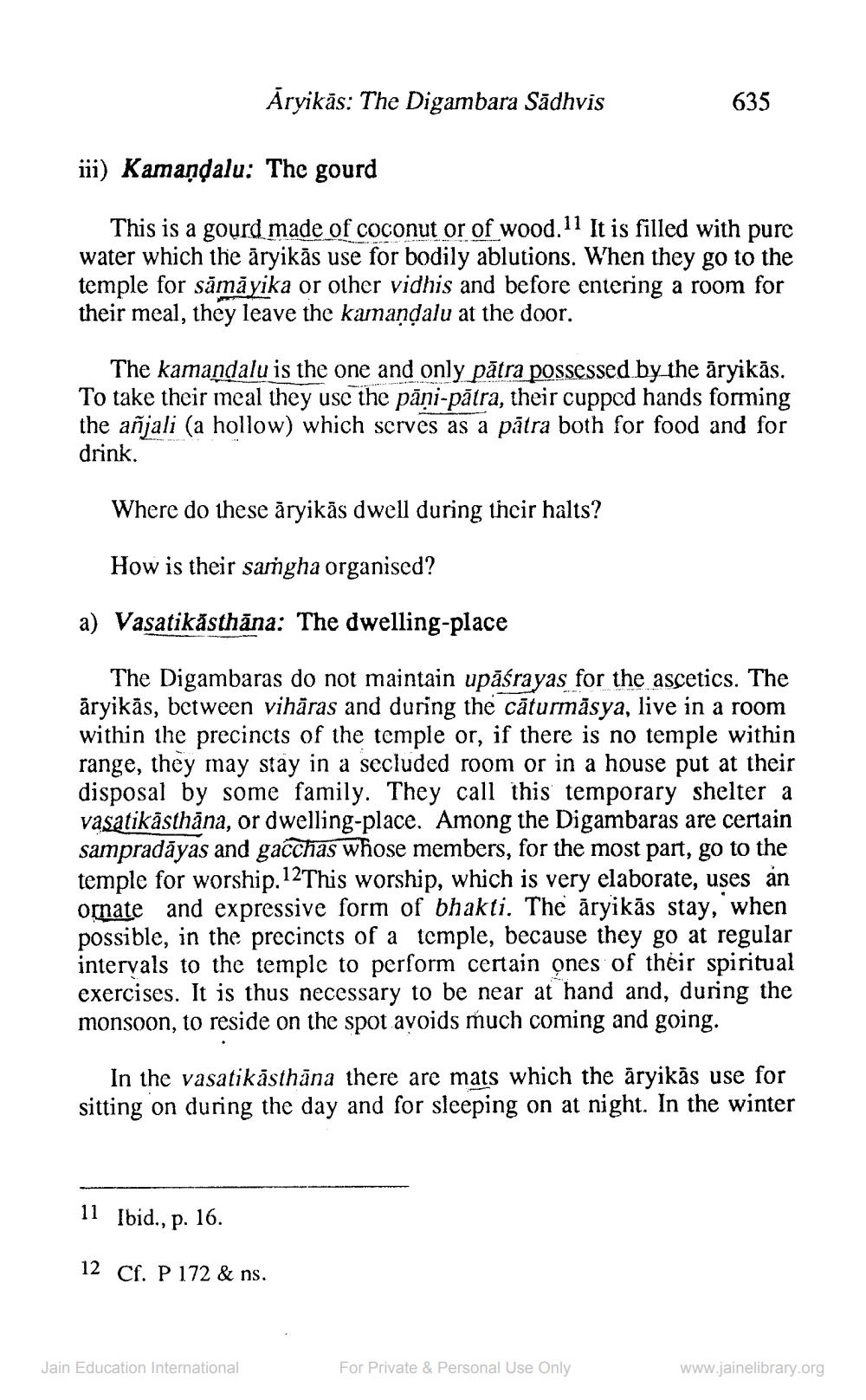________________
Āryikās: The Digambara Sādhvis
635
iii) Kamandalu: The gourd
This is a gourd made of coconut or of wood. 11 It is filled with pure water which the āryikās use for bodily ablutions. When they go to the temple for să măyika or other vidhis and before entering a room for their meal, they leave the kamandalu at the door.
The kamandalu is the one and only pátra possessed by the āryikās. To take their meal they use the pāņi-pātra, their cupped hands forming the añjali (a hollow) which serves as a pătra both for food and for drink.
Where do these āryikās dwell during their halts?
How is their samgha organised?
a) Vasatikästhāna: The dwelling-place
The Digambaras do not maintain upăśrayas for the ascetics. The äryikās, between vihāras and during the cāturmāsya, live in a room within the precincts of the temple or, if there is no temple within range, they may stay in a secluded room or in a house put at their disposal by some family. They call this temporary shelter a vasatikāsthāna, or dwelling-place. Among the Digambaras are certain sampradāyas and gacchas whose members, for the most part, go to the temple for worship. 12This worship, which is very elaborate, uses an ornate and expressive form of bhakti. The äryikās stay, when possible, in the precincts of a temple, because they go at regular intervals to the temple to perform certain ones of their spiritual exercises. It is thus necessary to be near at hand and, during the monsoon, to reside on the spot avoids much coming and going.
In the vasatikāsthāna there are mats which the āryikās use for sitting on during the day and for sleeping on at night. In the winter
11 Ibid., p. 16.
12 Cf. P 172 & ns.
Jain Education International
For Private & Personal Use Only
www.jainelibrary.org




